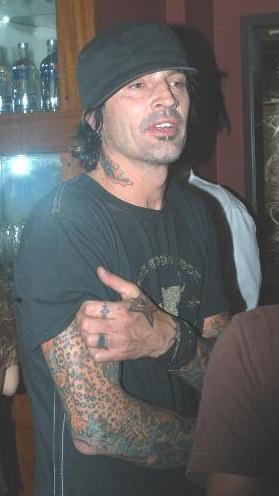
The sudden death of White Zombie gave Cummings time to reflect and reignite his passion for movies. However, the split was perhaps inevitable, as Zombie himself had become a bonafide rock star as 1996 came to a close, Robert Cummings faced a new dawn. But though it entered the history books as one of the biggest-selling rock/metal albums of the 90s (thanks in no small part to the inclusion of singles “Super-Charger Heaven” and the US No.10 “More Human Than Human”), it was the last studio album White Zombie would release, the band’s rigorous touring schedule taking its toll. Released in April 1995, Astro Creep: 2000 followed in the footsteps of Pantera’s groundbreaking 1992 album, Vulgar Display Of Power, and achieved multi-platinum status. What followed was a groundbreaking album that further pushed the boundaries of sound and composition, reinventing what had become a formulaic cycle within the heavy and alternative subgenres of the mid-90s. This bastardized cross-pollination of underground music spiked interest from die-hard metal, punk, and alt.noise fans around the globe, resulting in double-platinum recognition for sales of over two million.īy late ’93, Zombie had relocated to LA and found himself in a position of creative power with a substantial budget at his disposal. White Zombie’s major-label debut was an innovative breakthrough, embedding horror B-movie audio samples within industrial electronic undertones and snarling aggression. In 1992 the band issued their third album, the career-defining moment in Rob Zombie’s legacy, La Sexorcisto: Devil Music, Volume 1, which featured the likes of “Thunder Kiss ’65’ and “Black Sunshine.” The release of their third EP, 1989’s God Of Thunder, caught the interest of Geffen’s then A&R executive, Michael Alago, who’d previously signed Metallica. Though audiences didn’t know what to make of the band’s apocalyptic, punk-inspired noise, there was still something enthralling about White Zombie. Having accomplished a steady amount of local support, White Zombie began to bleed into the growing mid-80s metal scene, opening for bands such as Anthrax, Danzig, and Megadeth.

Zombie’s unpredictable career began to unfold thanks to his outsized presence on the New York club circuit. Their motive was to push the boundaries of experimental rock/art noise in both sound and performance. Rob felt the razzmatazz and showmanship of the New York underground art-rock scene lacked innovation, and, by the mid-80s, he and his then-girlfriend, Shauna Reynolds (AKA bassist Sean Yseult), developed the blueprint for White Zombie, named after the 1932 horror film of the same name – now considered the world’s first feature-length zombie movie.


Listen to our Rob Zombie In 20 Songs playlist now, and scroll down for our best Rob Zombie songs.Ī regular punter at the infamous CBGB club in the city’s then dilapidated East Village, he witnessed a vast array of punk and metal bands take to the stage, though most failed to grab his attention.


 0 kommentar(er)
0 kommentar(er)
